The UEFA Champions League 2020/21 came to an end with two of the best English teams – Manchester City and Chelsea playing the final in Porto. No team has won the Champions League in its first appearance in the final since 2000, and this trend continued, with Chelsea coming out on top and winning their second Champions League title.
City’s lineup saw a lot of scrutiny before the match, with most people wondering why Pep Guardiola had omitted a defensive midfielder from his lineup. However, City had issues all over the pitch as they were unable to come with Thomas Tuchel’s Chelsea. This tactical analysis brings out the key tactics of both teams in the final and how they impacted the game.
Lineups
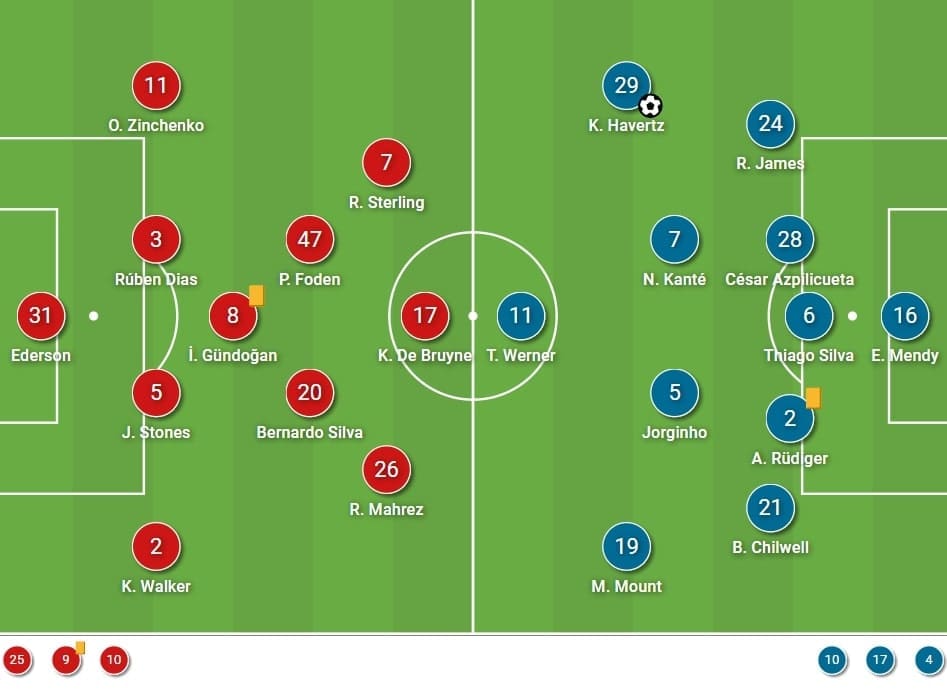
As mentioned earlier, there were a couple of surprises in Manchester City’s starting XI. Guardiola omitted both Fernandinho and Rodri from the XI, and this was only the second match this season where neither of those players had started for City. İlkay Gündoğan was played as the nominal defensive midfielder, with Phil Foden moving infield to accommodate Raheem Sterling on the left, who was another surprise pick.
Chelsea’s lineup was quite familiar, with Tuchel opting to use César Azpilicueta and Reece James in their usual positions at centre-back and wing-back respectively, rather than switching them as he had done in the last three games. Kai Havertz was a slightly questionable pick up front, but the German repaid his manager in a big way by scoring the only goal of the game.
Chelsea’s good defence constrained City’s build-up
While many observers claimed that City struggled due to the absence of a defensive midfielder, most arguments did not explain where the difference would be. In the first phase, City looked did not have too many issues, as they used Pep’s trademark tactics of a full-back inverting and the deepest midfielder dropping to control their build-up.
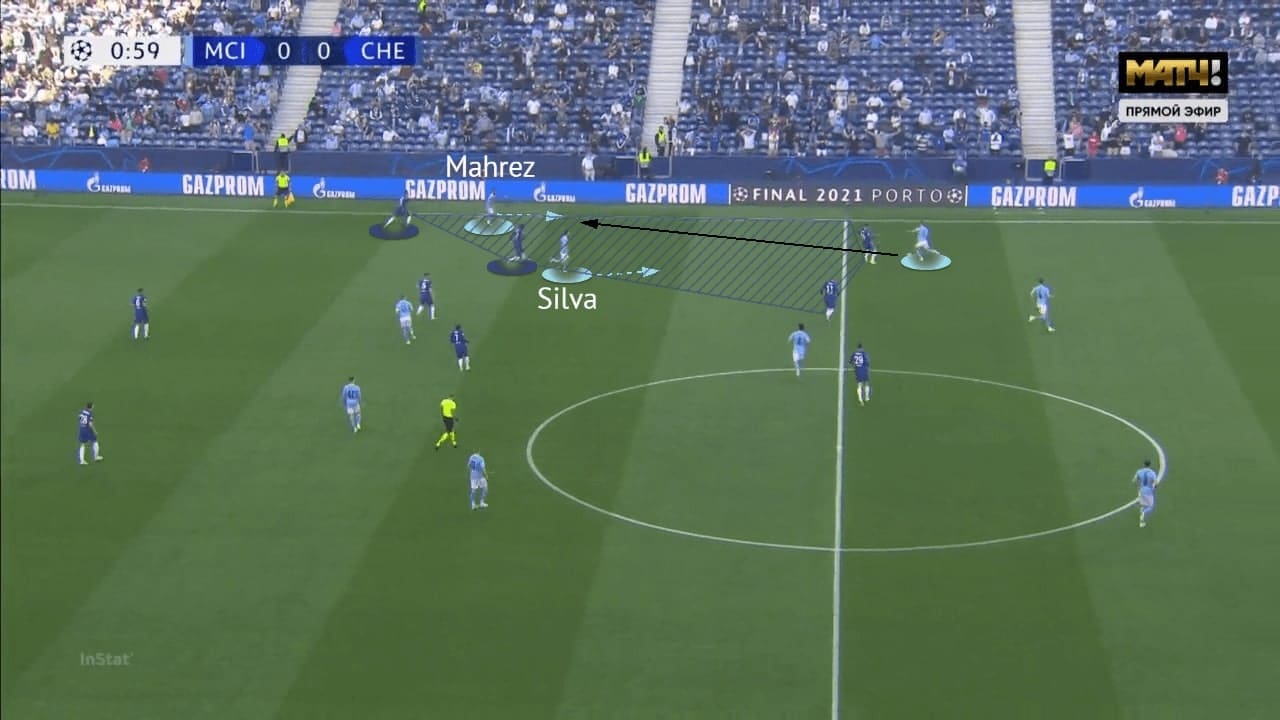
Our analysis begins with Chelsea’s defence. The Blues deployed a compact 5-2-3 block and used a wide trap when defending. Their wing-backs were very tight to the opposition wingers, making sure Riyad Mahrez and Sterling had no room to dribble. The wide centre-backs were also very aggressive at defending the space in front of them, stepping up to provide support to their two-man pivot when needed.
When City were playing passes to the wingers on the flanks, Chelsea were able to trigger their press. The image shows Kyle Walker’s pass to Riyad Mahrez, who had Ben Chilwell immediately pressing him from behind. Simultaneously, Bernardo Silva also dropped into the same area, and he brought Antonio Rüdiger with him. This example shows how the City players often moved into the same spaces, which reduced their room to play, especially with the aggressive marking from Chelsea. As the City players kept dropping deep, they invited pressure which made it difficult to play out. Mahrez, who was so effective in the semi-finals against Paris Saint-Germain, was extremely quiet in this match, as he rarely received the ball in space and with the room to dribble into. Chelsea’s wide pressing trap was quite effective at preventing ball progression for City, which they achieved by having more players around the ball than their opponents.
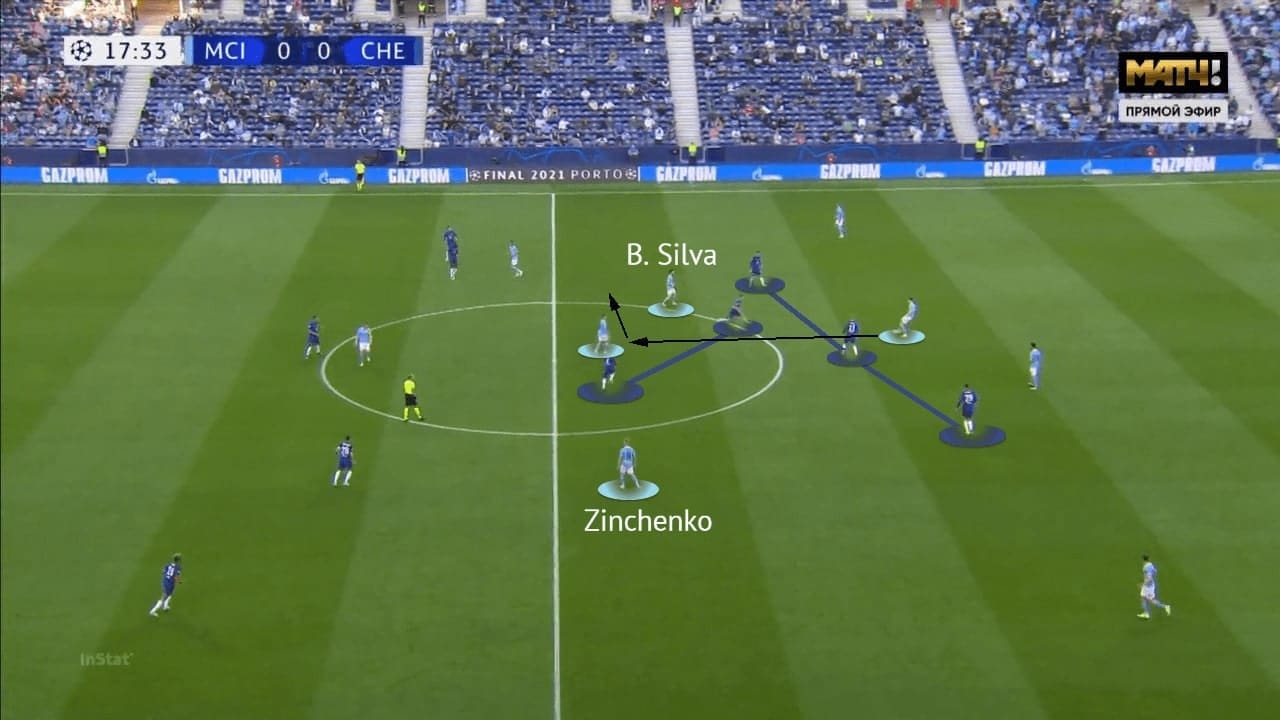
However, City could potentially break through the lines if they played centrally. Guardiola picked Gündoğan as the deepest midfielder as he is able to pass at a much higher tempo than Fernandinho or Rodri, and this would theoretically help City evade the Chelsea press and attack the defensive line quickly. However, on the day, City struggled to find the right rhythm and passing tempo.
Chelsea’s high block saw Mason Mount and Havertz defending as wide players; however, they did not apply enough pressure on the City defenders. The image above shows how City were able to create a 4v3 in their first phase, and then, with Bernardo Silva dropping in and Zinchenko inverting, they also had a 3v2 overload in midfield.
However, City struggled to play between Chelsea’s lines as the Blues were extremely compact vertically. In this scenario, even though Bernardo Silva received the ball in space after a third-man run, N’Golo Kanté arrived quickly to put pressure on the ball and allow Chelsea to recover quickly.
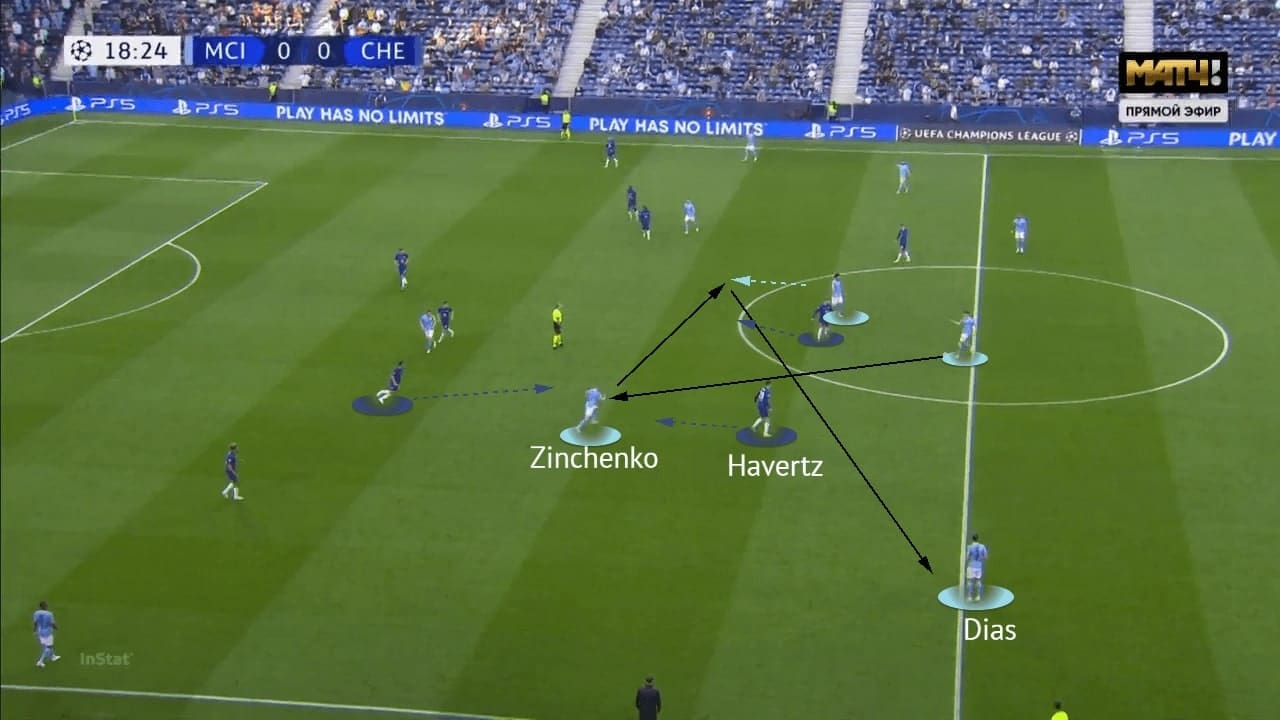
Tuchel quickly realized that the Chelsea block was a little too high, and he made changes to solve this by asking Havertz and Mount to defend deeper and narrower. This now caused issues for Zinchenko, as Havertz was covering him, and even though City used third-man runs and passes to try and progress centrally, they were usually forced out wide due to Chelsea’s press.
City’s positional structure had some big issues as well, as we will explain next.
City’s struggle without a striker
The position City missed on the pitch was a striker, not a defensive midfielder. They did not pose enough threat centrally in the absence of a player who could position himself correctly between the centre-backs. Even when there was space to exploit, City had nobody making the correct runs to do so.
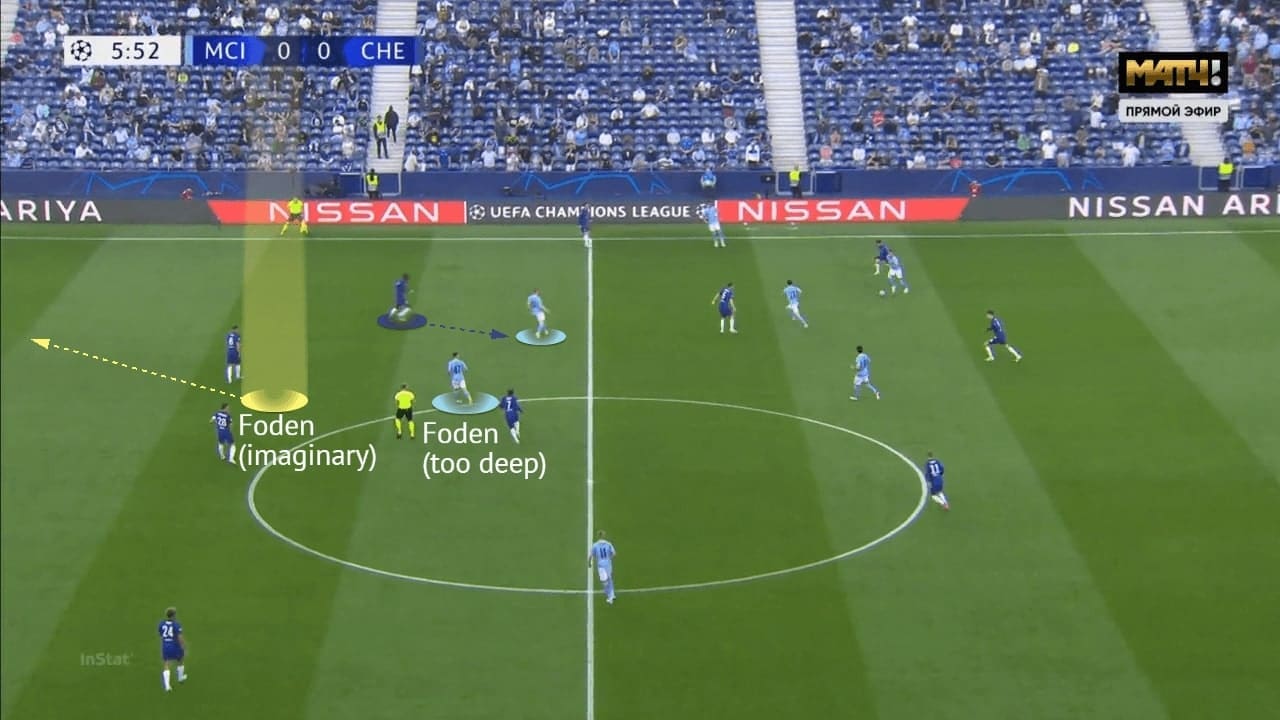
The first image shows how the City players failed to position themselves optimally; they had too many players asking for the ball to be played into their feet rather than making runs in behind, which was easy for Chelsea to defend. In this image, Kevin De Bruyne dropped deep and pulled Rüdiger out of position, but City failed to exploit this, as Phil Foden was also too deep when he should have been attempting a run into the vacated space, as shown above.
This led to overcrowding in midfield. City wanted to try and play between the lines as much as possible, but Chelsea’s compact block meant that those spaces were minimal. In contrast, Chelsea conceded a lot more space behind their defensive line, but City did not take advantage of this regularly enough.
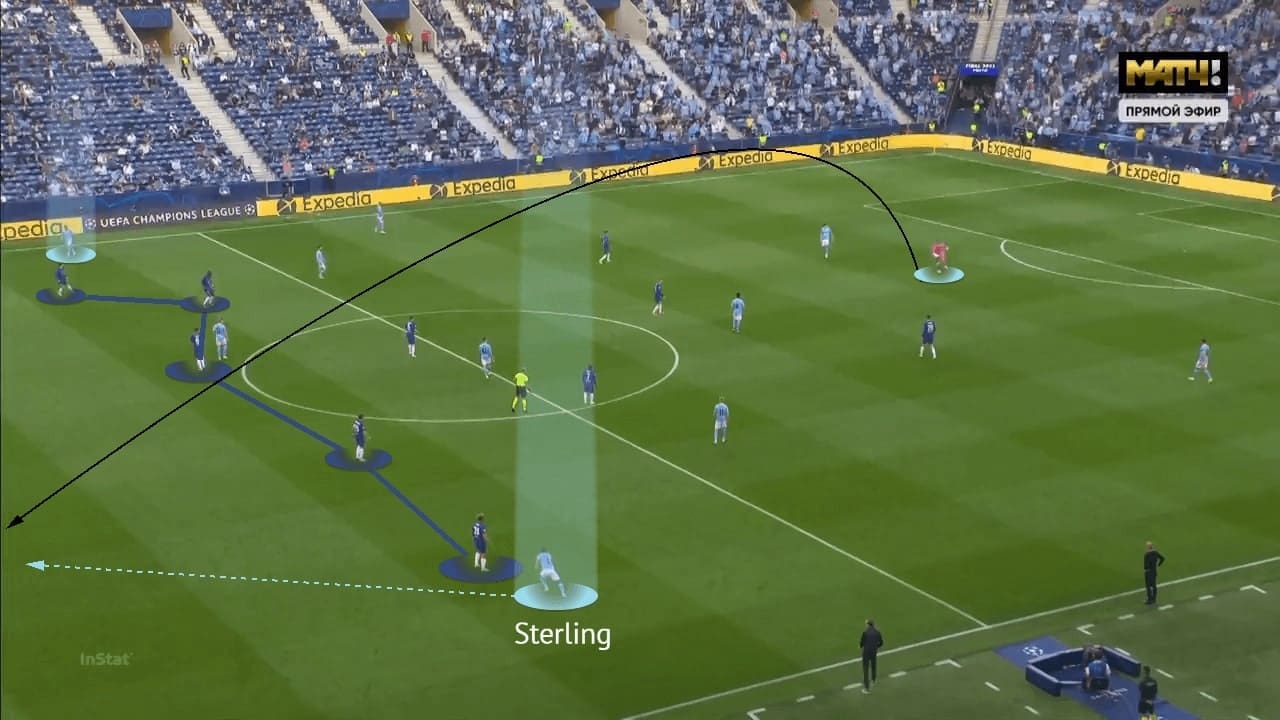
One such rare occasion came in the first half, when Sterling was able to get behind Reece James and get on the end of Ederson’s long pass, as shown above. His poor first touch allowed James to recover, but this was a promising situation early on in the game that City should have tried to replicate. Sterling had ostensibly been picked because of his ability to stretch play both vertically and horizontally, but after this instance, City rarely threatened in behind Chelsea’s defence.
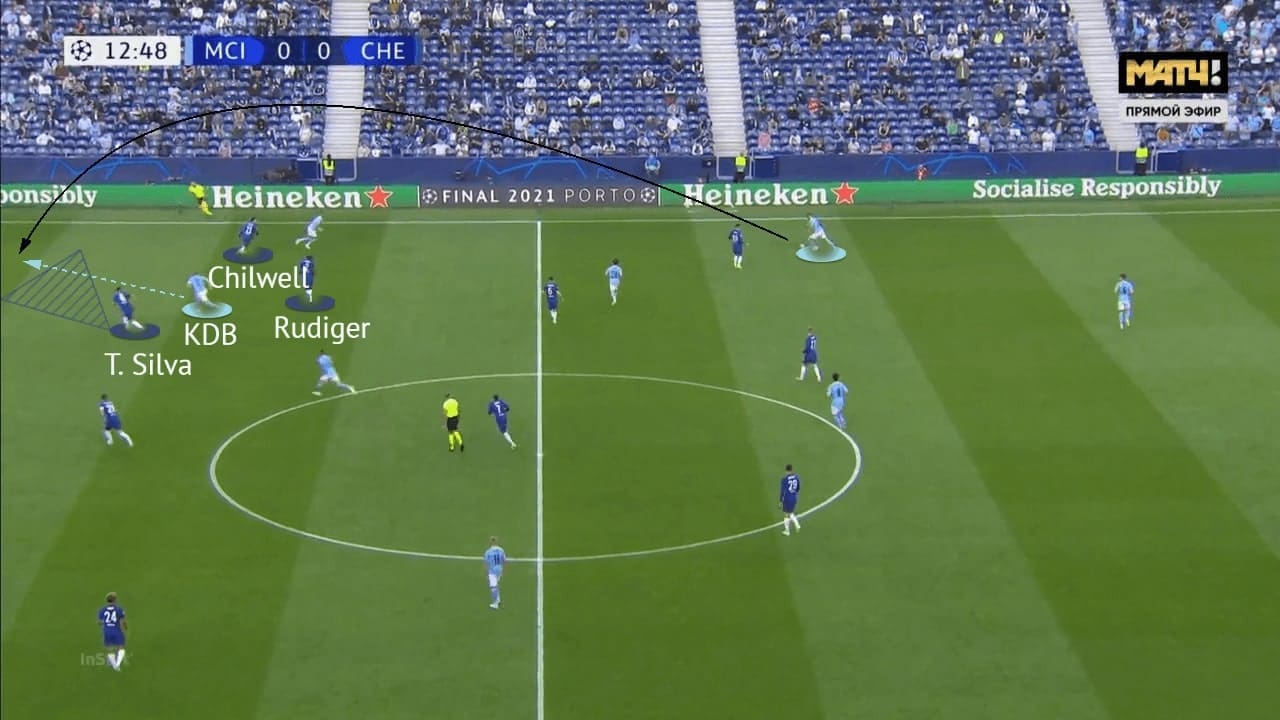
The Chelsea defence also deserves credit for their performance, as they covered for each other and ensured that on the occasions that City did try to threaten in behind, there was always a player, usually Thiago Silva before his injury, and then Andreas Christensen, mopping up.
This image shows one such occasion where Silva anticipates De Bruyne’s forward run and is therefore yards ahead of him and able to get to the ball first. Silva’s positioning was crucial for Chelsea to be able to ask Rüdiger and Azpilicueta to play in such an aggressive manner.
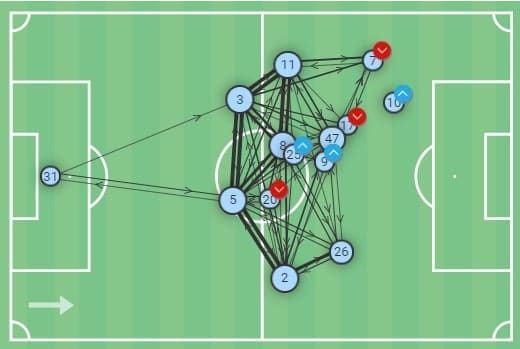
Havertz and Werner’s excellence
Chelsea, on the other hand, created quite a few opportunities to score, especially in the first half where they could have been 3-0 up if they had taken their chances. Havertz and Timo Werner played a big role in Chelsea’ attacking threat, and this would have been difficult for City to defend even with Fernandinho on the pitch.
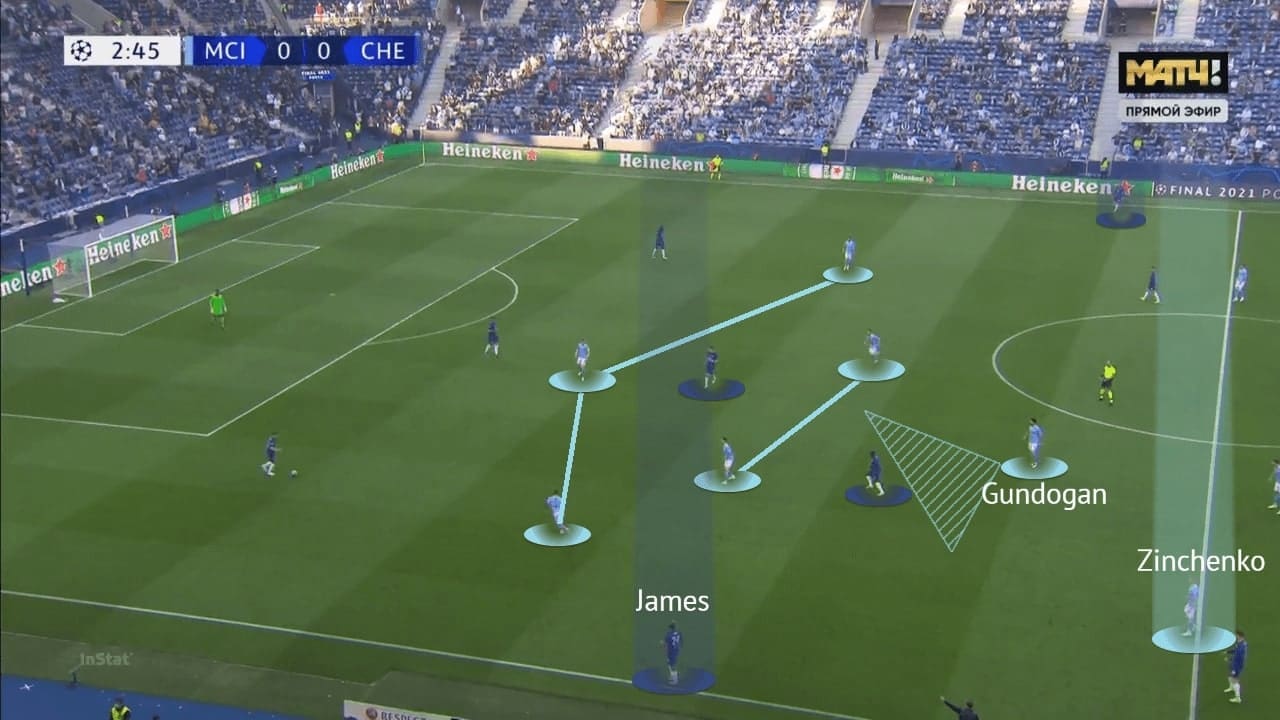
City decided to press from inside to out in this game by maintaining a central overload in the midblock. The aim was to try and dominate centrally and get players around Jorginho and Kanté, as shown in the image, while the full-back also attempted to press the opposition wing-back high when Chelsea went wide, to try and cut out all short passing options. Gündoğan was crucial here, as he has excellent positional awareness and was therefore able to appear at the right place at the right time. As the most defensive of the City midfielders, he was the one providing balance to this structure.
Chelsea had a back three in their build-up with Jorginho as the deepest midfielder, while the wing-backs stayed high and wide to stretch the pitch. This provision of width turned out to be the decisive factor in this game.
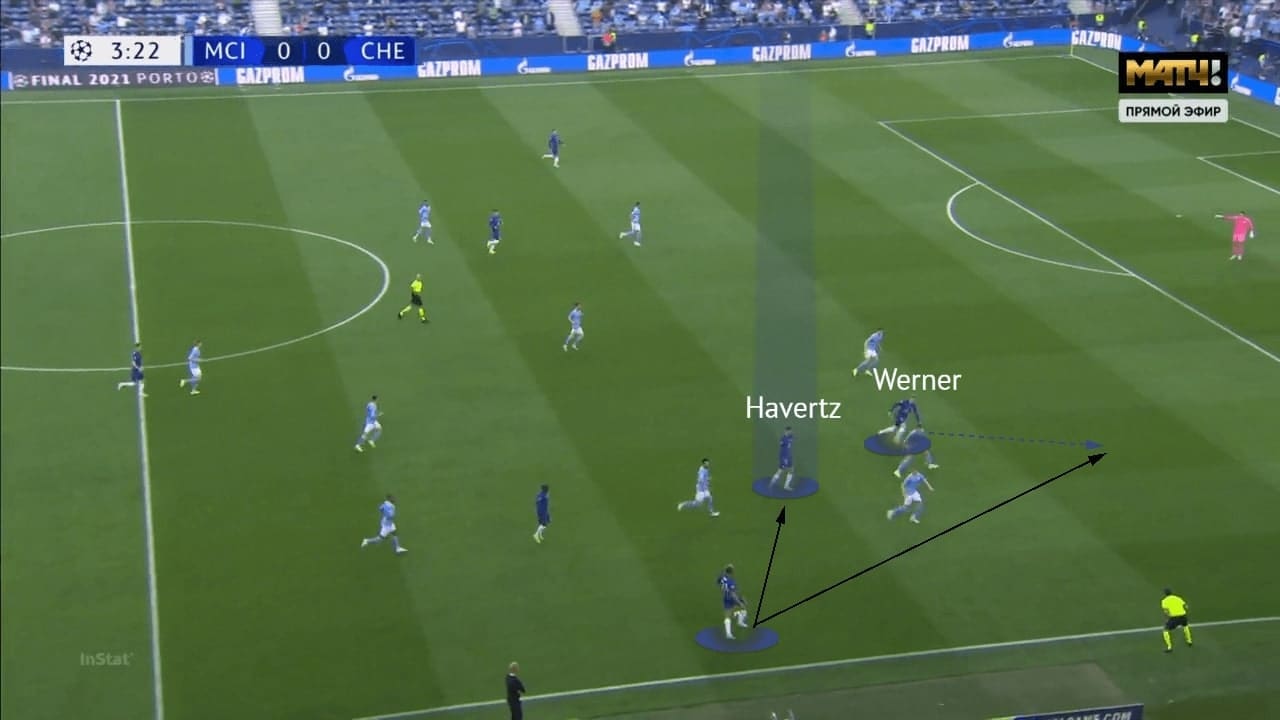
City struggled with Havertz and Werner’s positioning and movement throughout the match, but especially in the first half. In this image, we can see Werner’s run from inside to out, which forced a centre-back to go with him and opened up space for Havertz. We can also see how James now has two passing options on the ball as well through Werner’s movement.
City also did not defend with the required intensity to recover possession when Chelsea were passing in tight spaces or out wide, and allowed the Blues to play through their press quite easily.
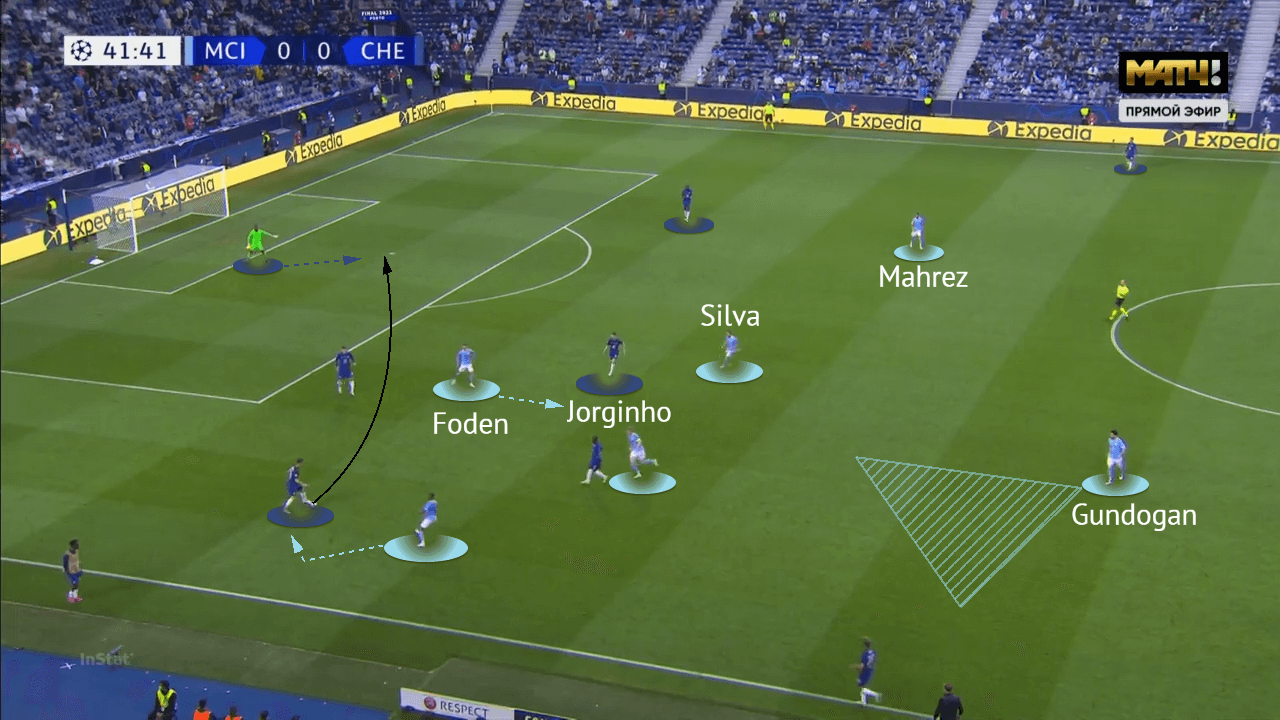
Chelsea’s goal came from a number of factors, one of which was City’s persistent issue of being unable to prevent Chelsea’s goalkeeper from getting involved in the build-up, as we can see in the above image.
City were pressing in their usual shape, with Gündoğan staying deeper to cover. When Sterling moved to block off the pass to James and force Azpilicueta to pass to Mendy, Foden needed to move higher and prevent a switch to Rüdiger and Mendy. Instead, he moved closer to Jorginho, who was already being covered by Bernardo Silva. Mendy was then able to switch the ball to the opposite flank where Mahrez was outnumbered and Chelsea were able to fly up the pitch.
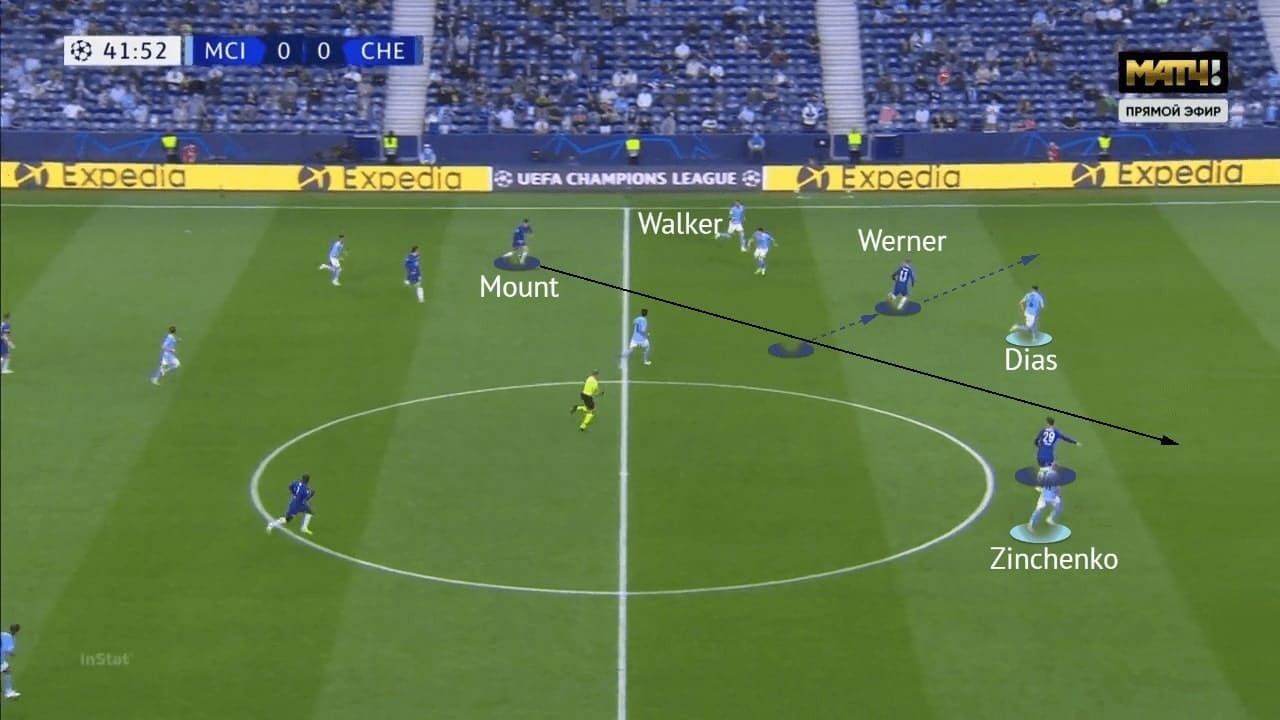
Werner’s diagonal run forced Dias out of position to cover, which opened up a huge gape between him and Zinchenko for Havertz to run into, and Mount was able to slide a pass into this area for Havertz to collect and score from.
Second half changes
During the break, Pep tried to improve City’s goal threat and made some changes. However, the impact of these tweaks was not immediately obvious as City continued to struggle without a striker on the pitch.
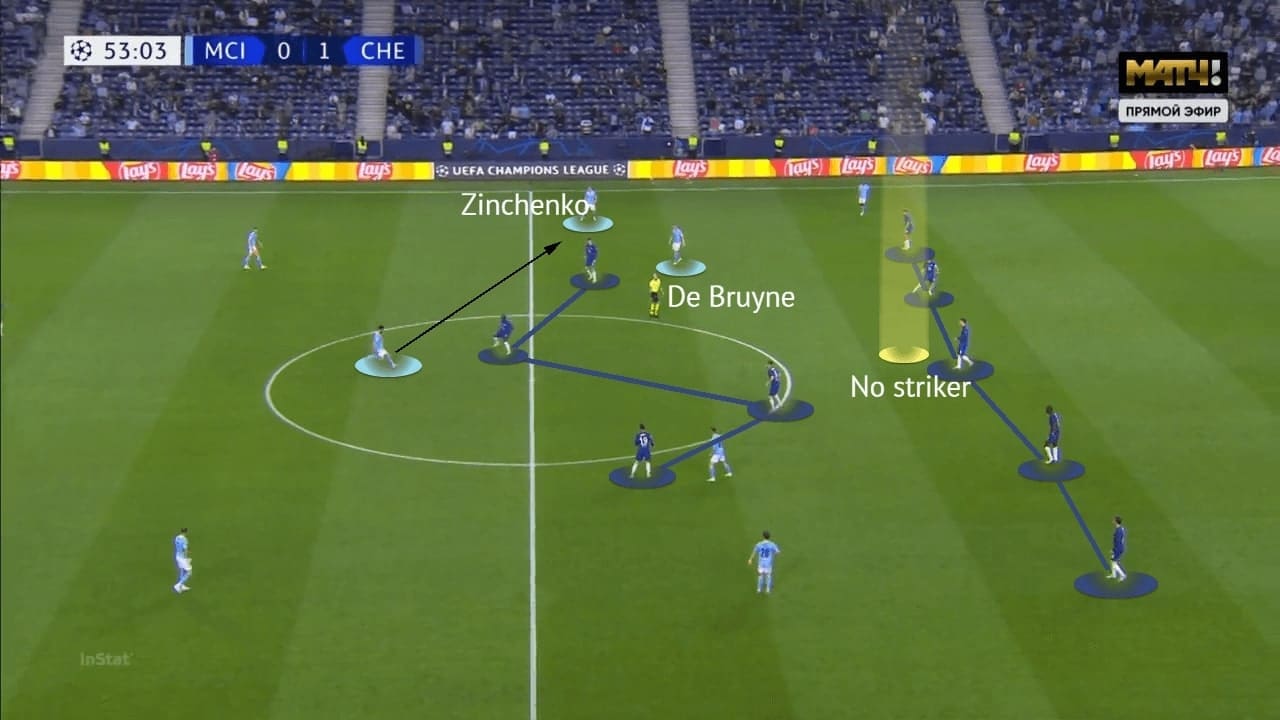
Zinchenko had more flexibility to shift between coming inside and staying wide on the left, with Gündoğan dropping deeper when he was wide. De Bruyne and Foden also swapped positions, with Foden now playing more centrally and De Bruyne going to the left. This was done to try and create more situations for diagonal passes with the offensive players playing on the ‘wrong’ sides in terms of their stronger foot.
However, due to the lack of a striker, they were unable to break down Chelsea’s block. We can see how the Chelsea backline has nobody to mark centrally, with Sterling and Mahrez (out of shot) merely staying wide to stretch the defence. Sterling is even occupying the same vertical zone as Zinchenko here, rather than attempting to make a run centrally. Thus, City lacked central progressive passing options which prevented them from threatening the Chelsea defence.
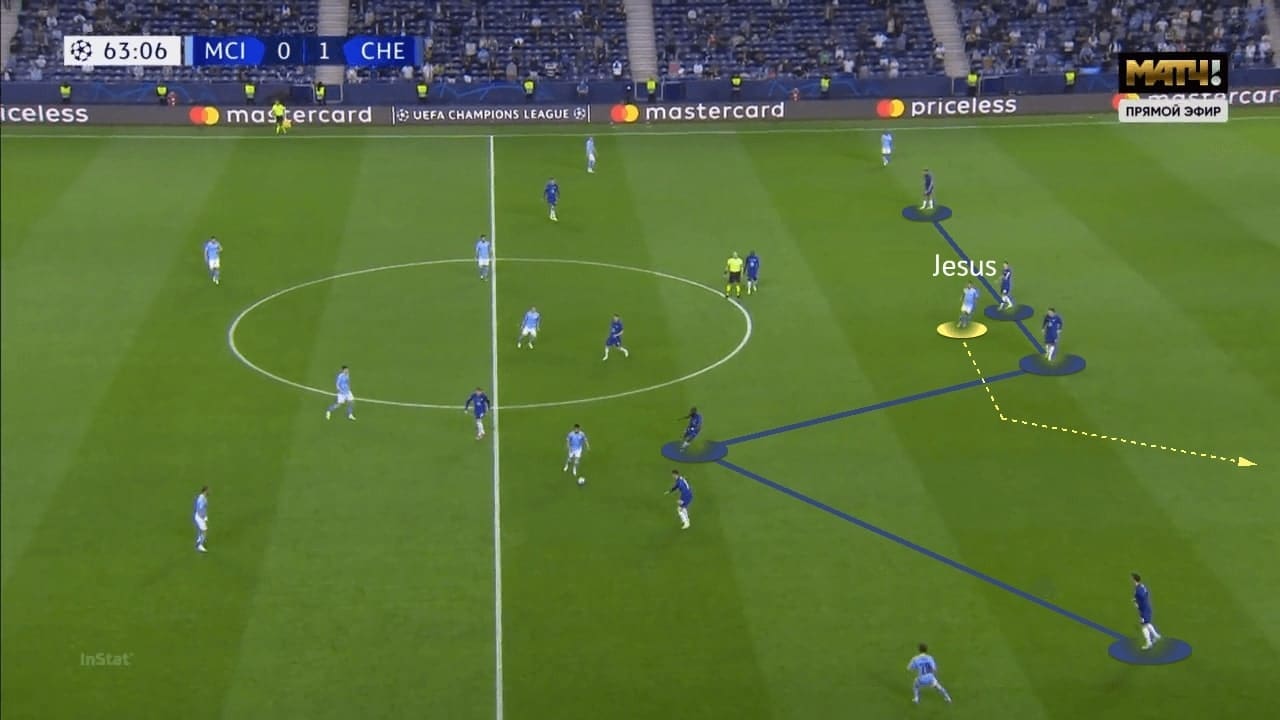
Even after Gabriel Jesus replaced the injured De Bruyne, the same issues kept being repeated. This image shows how Rüdiger once again stepped out of the defensive line and left a big gap that could have been exploited by Jesus with a run, but he failed to do so and the gap was soon closed again.
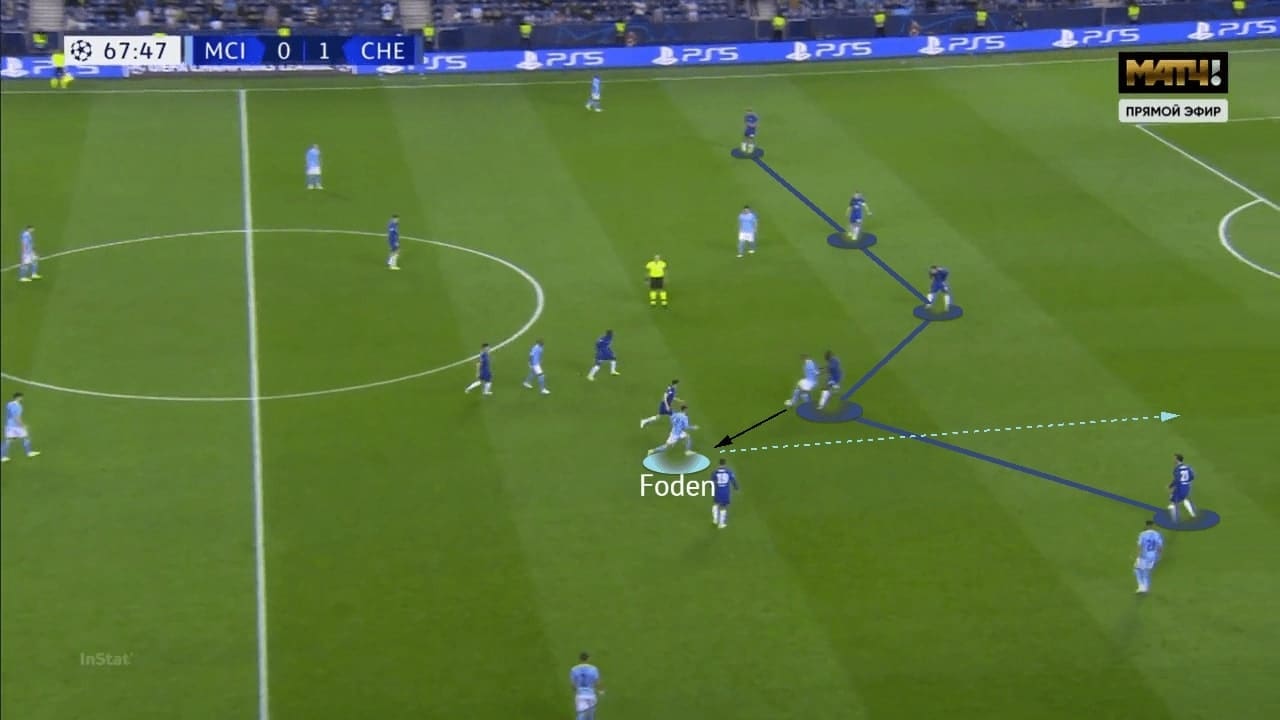
City did create a few promising situations as the game went on, primarily by exploiting the half-spaces after the Chelsea centre-backs stepped up into midfield. However, they needed to play between the lines and then run into those channels with the ball, rather than making runs off the ball and looking to receive behind the line.
This image shows one such dangerous situation that was created in this manner. Sterling lays the ball off to Foden after pulling Rüdiger out of position and creating the gap for the 21-year-old to run into. This led to a dangerous cross that Chelsea managed to defend, but City struggled to replicate this sort of situation consistently through the match.
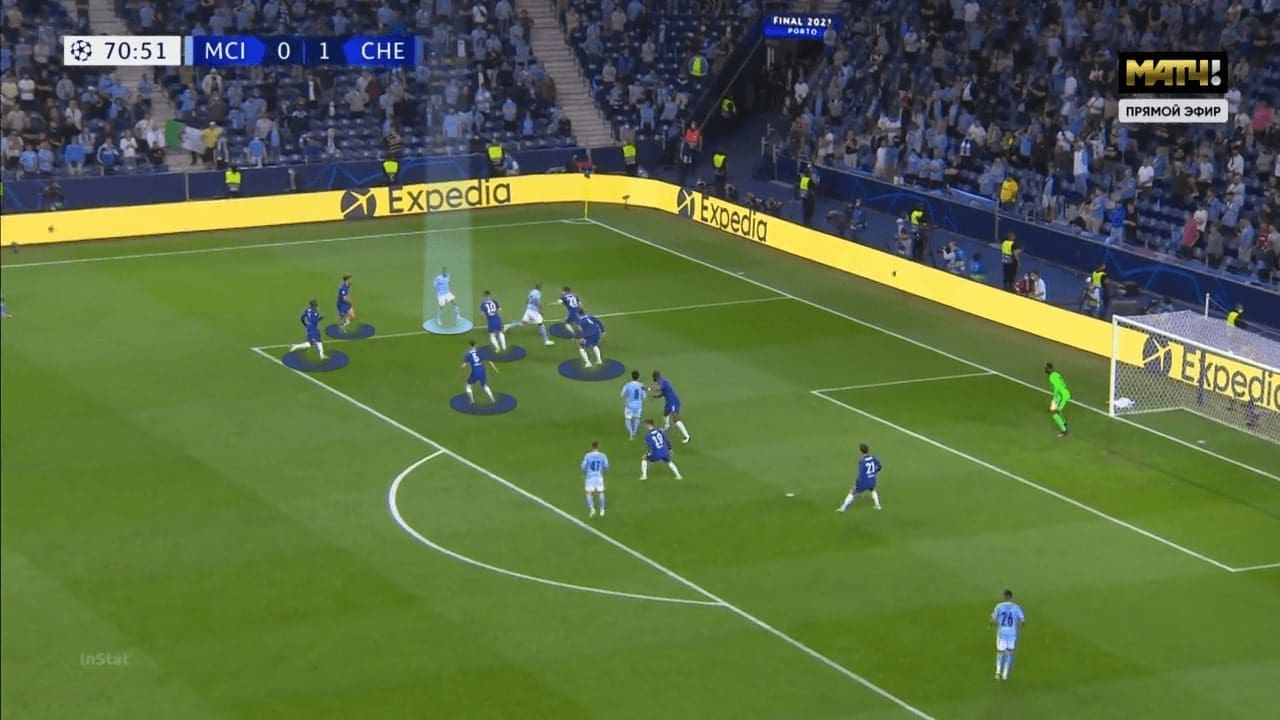
Final remarks
Chelsea were deserved winners, with Tuchel getting his tactics spot on – City did not have a shot on target after the seventh minute in this match, which goes to show just how well the Blues managed to shut down one of the best attacking sides in Europe. They also created quite a few big opportunities, and with better finishing, could have well scored one or two more goals to underline their dominance of this match.
Manchester City and Pep Guardiola will be extremely disappointed by this loss, even though they managed to make it to the final for the first time this season. Having got there, they would have wanted to win it, and while we have shown how the absence of a defensive midfielder was not the primary reason for City’s loss, it can be argued that moving away from the system and some of the players who had done so well this season may have taken away some of the fluency and familiarity for the City players on the pitch.





Comments